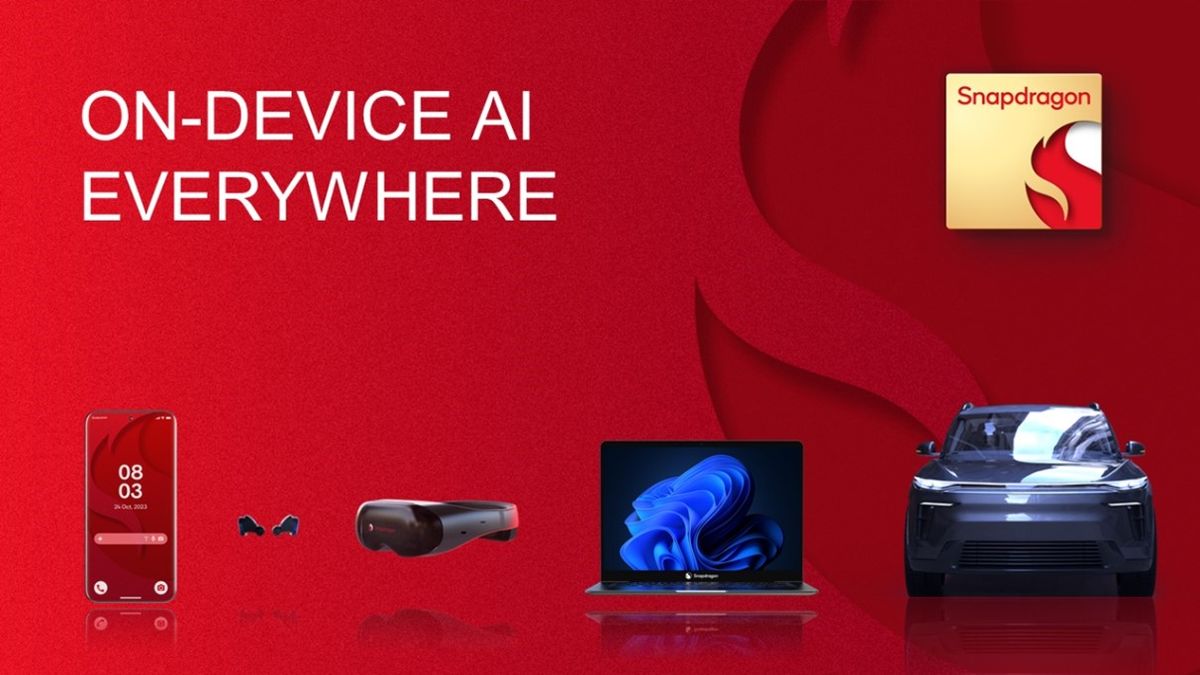AI to Drive the Future of Mobile Devices, Laptops, and Smartphones, says Qualcomm
At the Qualcomm Snapdragon Summit, the tech giant discussed how AI will shape the future of mobile devices such as laptops and smartphones. While there were no concrete demonstrations of what this AI-driven future will look like, Qualcomm remains confident that it will be revolutionary. Although Qualcomm did not take the responsibility of showcasing this future themselves, as their Snapdragon platform works in collaboration with Meta, Microsoft, Google, and other AI developers.
During the Summit, however, the AI demonstrations contradicted Qualcomm’s claims regarding the reasons for embracing AI. As a participant paid by Qualcomm to attend the event, I had the opportunity to witness the latest innovations in Snapdragon technology. These include the brand new Snapdragon X Elite chipset for Windows laptops, an upgrade to the Snapdragon 8 Gen 2 found in the best Android phones of the past year, and various innovative products across different lines.
The common thread connecting all of these innovations is AI, particularly machine learning techniques. AI and machine learning are at the forefront of Qualcomm’s plans for the coming year. The new X Elite laptop processor will feature a dedicated neural processing unit (NPU) on board, ensuring compatibility with various AI applications.
Similarly, the next-generation Snapdragon 8 Gen 3 platform for smartphones and tablets will also have an NPU to power any AI features developed by phone manufacturers. However, the specifics of these AI features remain uncertain.
One question that stands out is how an AI-powered laptop or smartphone will fundamentally change our daily routines. As a writer, my laptop currently serves as a tool for browsing the internet and checking social media. I wonder what will be different when AI takes over. The same applies to my smartphone, which I typically use to check messages and play games before turning to my laptop. How will an AI-driven operating system alter this routine?
At the Summit, Qualcomm presented an optimistic outlook on AI. AI is positioned as a tool to eliminate mundane tasks and free up more time for humans to engage in creative and unique work. This perspective is shared by Sayeed “Sy” Choudhury, Lead for Applied AI Business Development & Partnerships at Meta, who emphasized that AI is intended to assist rather than replace humans.
This perspective aligns with what writers and creators hope for – AI that removes the tedious aspects of their work, allowing them to focus on more interesting and innovative tasks. Dave LeBolt, a seasoned creator and co-creator of Avid Studios and ProTools, echoed this sentiment. He emphasized that AI should alleviate the burdensome aspects of creativity while allowing humans to preserve their unique contributions.
However, the AI demonstrations at the Qualcomm event did not align with this ideal version of AI. Instead, they showcased an AI that appears more advanced than what is currently available on mobile devices but still lacks a personal touch. Moreover, these AI demos did not emphasize collaboration between creators and AI; rather, they portrayed AI as the primary creator while humans merely execute its ideas.
For instance, in one demonstration, an AI assistant on the Snapdragon X Elite laptop created a marketing plan to make money at the beach. Although the AI generated ideas and strategies independently, it raises questions about the role of creativity and authorship. Who is the creator and who is the tool? It seems that in this scenario, the laptop plays the creative role while humans simply execute its plans.
Another demonstration involved the AI assistant writing a poem about the sea. While the AI quickly produced multiple poems, it missed the mark initially by understanding “seed” instead of “sea.” This begs the question of who is truly being creative. Humans provide the subject, and the AI creates the work. In this process, it appears that the AI replaces rather than complements human creativity.
Similarly, a demonstration involving AI planning an itinerary for a day with a friend visiting from out of town highlights potential biases and limitations. Although the AI suggests activities based on the user’s preferences and information about the area, it raises concerns about exclusion and a narrow scope of suggestions. How does the AI select events, businesses, or areas of interest? The lack of information on how biases are addressed raises doubts about the AI’s reliability.
Moreover, this type of AI does not align with what individuals typically enjoy about travel – discovering and selecting activities that excite them the most. Booking flights and accommodations, which were previously considered tedious tasks, have become simplified with online booking systems.
Consequently, the real drudgery lies in packing, organizing tickets, and remembering reservations. While AI could potentially take over these tasks, the demonstrations showcased at the event focused on AI making creative decisions on behalf of humans. This contradicts Qualcomm’s claims that AI should remove drudgery and enable humans to activate their creativity.
In conclusion, while Qualcomm and its partners present an optimistic view of AI, the demonstrations at the Snapdragon Summit fall short of showcasing the promised version of AI. The AI shown replaces rather than empowers human creativity, raising concerns about authorship and biases. The potential of AI remains unfulfilled in demonstrating its ability to remove drudgery and enhance human creativity. Only time will tell how AI will truly shape the future of mobile devices.

I have over 10 years of experience in the cryptocurrency industry and I have been on the list of the top authors on LinkedIn for the past 5 years.

